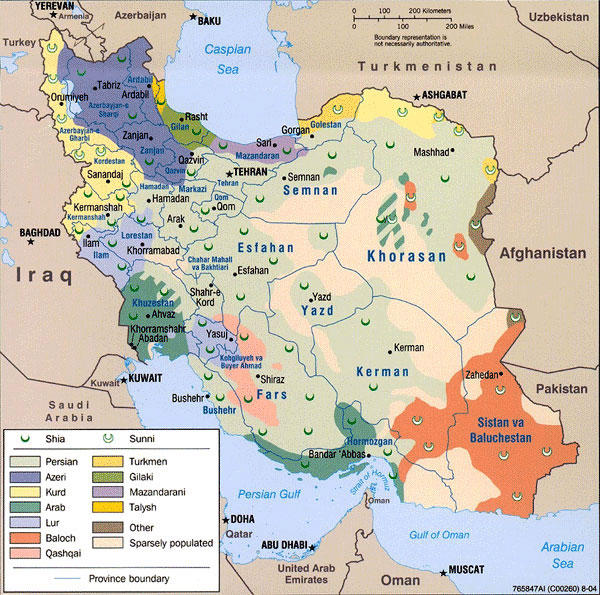
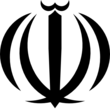
What is the flag of Iran?
The flag of Iran consists of three equal horizontal bands of green (top), white, and red; the national emblem (a stylized representation of the word Allah in the shape of a tulip, a symbol of martyrdom) in red is centred in the white band; ALLAH AKBAR (God is Great) in white Arabic script is repeated 11 times along the bottom edge of the green
band and 11 times along the top edge of the red band.
Perspolis, Capital of Achaemenid Empire
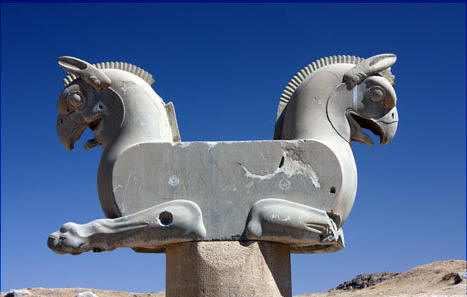
The magnificent palace complex at Persepolis was founded by Darius the Great around 518 B.C., although more than a century passed before it was finally completed. Conceived to be the seat of government for the Achaemenian kings and a center for receptions and ceremonial festivities, the wealth of the Persian empire was evident in all aspects of its construction. The splendor of Persepolis, however, was short-lived; the palaces were looted and burned by Alexander the Great in 331-330 B.C.
The ruins were not excavated until the Oriental Institute of the University of Chicago sponsored an archaeological expedition to Persepolis and its environs under the supervision of Professor Ernst Herzfeld from 1931 to 1934, and Erich F. Schmidt from 1934 to 1939.
The magnificent ruins of Persepolis lie at the foot of Kouh-e Rahmat, or "Mountain of Mercy," in the plain of Marv Dasht about 850 kilometers south of the present capital city of Tehran and about 50 kilometers north of Shiraz.
The exact date of the founding of Persepolis is not known. It is assumed that Darius I began work on the platform and its structures between 518 and 516 B.C., visualizing Persepolis as a show place and the seat of his vast Achaemenian Empire. He proudly proclaimed his achievement; there is an excavated foundation inscription that reads, "And Ahuramazda was of such a mind, together with all the other gods, that this fortress (should) be built. And (so) I built it. And I built it secure and beautiful and adequate, just as I was intending to." But the security and splendor of Persepolis lasted only two centuries. Its majestic audience halls and residential palaces perished in flames when Alexander the Great conquered and looted Persepolis in 330 B.C. and, according to Plutarch, carried away its treasures on 20,000 mules and 5,000 camels.
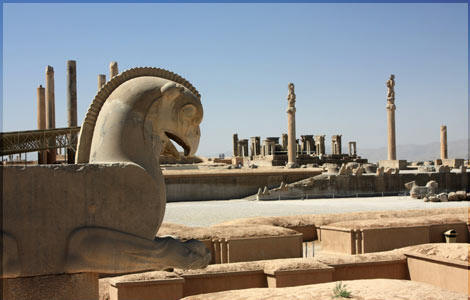
From the time of its barbaric destruction until A.D. 1620, when its site was first identified, Persepolis lay buried under its own ruins. During the following centuries many people traveled to and described Persepolis and the ruins of its Achaemenid palaces. Many of their observations were later condensed and published by George N. Curzon in Persia and the Persian Question (London and New York, 1892). But scholarly and scientifically planned work was not undertaken until 1931. Then Ernst Herzfeld, at that time Professor of Oriental Archaeology in Berlin, was commissioned by James H. Breasted, Director of the Oriental Institute of the University of Chicago, to undertake a thorough exploration, excavation and, if possible, restoration of the remains of Persepolis.
Thus, Herzfeld, in 1931 became the first field director of the Oriental Institute's Persepolis Expeditions. In 1931-34, assisted by his architect, Fritz Krefter, he uncovered on the Persepolis Terrace the beautiful Eastern Stairway of the Apadana and the small stairs of the Council Hall. He also excavated the Harem of Xerxes. When Herzfeld left in 1934, Erich F. Schmidt took charge. He continued the large-scale excavations of the Persepolis complex and its environs until the end of 1939, when the onset of the war in Europe put an end to his archaeological work in Iran. During the last years of excavating, the University Museum in Philadelphia and the Museum of Fine Arts in Boston had joined the Oriental Institute in order to cope with the tremendous work at hand.
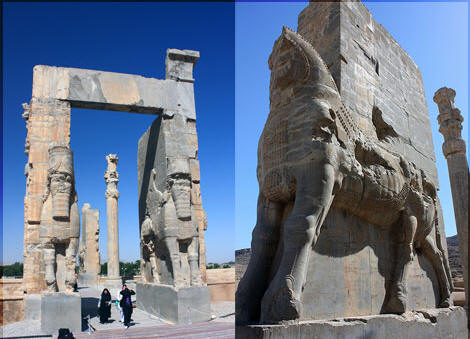
Schmidt's expedition staff, though varying from year to year, consisted mainly of his assistant Donald E. McCown, architect John S. Bolles and assistant Elliot F. Noyes (both later replaced in 1937 by Richard C. Haines), photographer Boris Dubensky, and various draftsmen, recorders, mechanics, and the like. The digging crew, recruited from villagers, fluctuated from 200 to 500 men. Elaborating on this, Schmidt wrote that at the beginning of each season about 20 to 30 laborers arrived from Damghan, old-time workers, honest peasants and trusted hands, who were trained for the delicate job of excavating. They, in turn, recruited the bulk of the digging crew.
